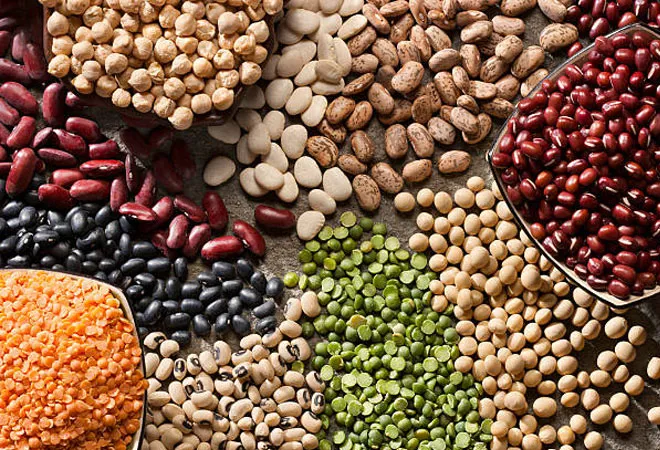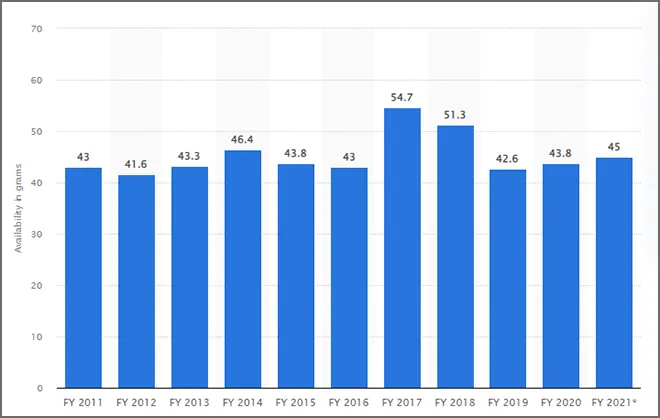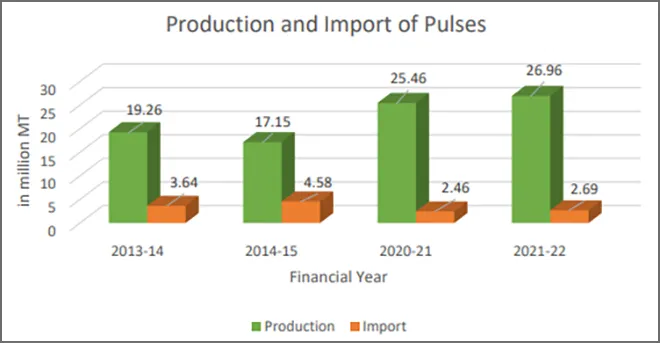-
CENTRES
Progammes & Centres
Location
It is vital to raise awareness about the benefits of eating pulses that are high in macronutrients for both sustainability and dietary needs

The United Nations General Assembly endorsed the request made by the Government of Burkina Faso regarding the annual observance of World Pulses Day on 10 February at its 73rd session in December 2018, building on the success of the 2016 International Year of Pulses, with Food and Agriculture Organisation (FAO) playing a leading role in the campaign. The 2023 World Pulses Day's theme is “Pulses for a Sustainable Future,” which underlines the significance of pulses in fostering equity and generating chances for livelihood, both of which are essential elements of sustainable agrifood systems.
Pulses have a lower water footprint than other food crops and are better able to withstand drought and climate-related calamities, making them a crucial tool for adjusting to and reducing climate change. They also help farmers in water-scarce regions have a better quality of lives. In a number of farming systems, including agroforestry, intercropping, and integrated farming systems, pulses can help to increase productivity and improve the resilience of agricultural livelihoods. From an economic standpoint, the global pulses industry—which deals with the production and trade of pulses—also demonstrates to be a beneficial force in ensuring the stability of regional and global supply chains, enabling consumers to access wholesome foods, and promoting the sustainable use of natural resources.
Pulses have a lower water footprint than other food crops and are better able to withstand drought and climate-related calamities, making them a crucial tool for adjusting to and reducing climate change.
Pulse grains have been acknowledged as being a “Most Valuable Player” in preventing obesity, lowering chronic diseases such as diabetes and heart disease, and fostering a varied microbiome in children who are at risk of stunting during the first 1,000 days of their life. Pulses are a great choice for populations with diets low in protein because they contain two to three times as much protein as cereals. Farmers can draw from a wide range of options when they incorporate pulses into their cropping systems to lessen the effects of pests, diseases, and weeds as well as weather extremes while acquiring a new source of revenue. However, pulses provide a number of other assets to the climate change battle. They lessen the requirement for fertiliser throughout the entire crop cycle and reduce greenhouse gas emissions by “fixing” atmospheric nitrogen. A significant advantage in a changing climate is that many pulse crops are evolved to grow in arid circumstances and can withstand drought stress better than most other crops. Thus, achieving Sustainable Development Goals 2, 3, and 13 which call for improved human health, sustainable agriculture, food security, and climate action.
Pulse consumption in India
The daily availability of pulse per capita across India was about 45 grams in 2021, a rise from the previous years (fig 1 below).
 Source: India:Daily Per Capita Availability of Pulses
Source: India:Daily Per Capita Availability of Pulses
In rural and urban India, respectively, the monthly per capita consumption of pulses decreased from 0.81 kg to 0.96 kg in 1999-2000 to 0.74 kg and 0.86 kg in 2011-12. India is currently the world's largest producer and consumer of pulses, but because production is insufficient to meet demand, imports are necessary. In recent years, India's demand for pulses has steadily increased. In keeping with the government's measures to expand pulse production (fig 2 below) to meet domestic demand, the volume of imports has consistently decreased since 2014-15. An estimated 26.96 million tonnes of pulse is produced by India.
 Source: 2nd Advanced estimation of production of food grains 2021-22
Source: 2nd Advanced estimation of production of food grains 2021-22
Table 1 shows the demand, production, import dependency, and future projections for pulses. It shows a decrease in imports by 2020-31 to 3.6 percent from 9 percent in 2021-22.
Not only the production, both the acreage and yields have grown dramatically. Pulses were grown on 24.91 million hectares (Mha) of land in 2015–16, with an average yield of 656 kg/ha, gone upto 30.37 Mha in 2021–2022, with an average yield of 888 kg/ha. To increase the production of pulses, the Government of India is implementing National Food Security Mission-Pulses programme across 644 districts of 28 States and Union Territories (UTs) of Jammu & Kashmir and Ladakh.
With a slight increase in monthly per capita consumption, pulses provide 10 percent of the dietary protein. Pulses can be included to cereal-based meals to help combat malnutrition. There is evidence to support the fact that people who eat pulses more frequently are more nutrient-secure. A study on factors influencing pulse consumption by Indian households, calls for policies to increase market accessibility, and the cost of pulses in comparison to other foods. In Indian diets, pulses are a crucial source of protein. Children, adolescent girls, and pregnant and lactating women receive half of the recommended dietary requirement of protein through the Government of India's food security programmes. During the pandemic, 5 kg of rice/wheat and 1 kg of selected pulses were provided to the poor under the Pradhan Mantri Garib Kalyan Yojana . Some states, including Andhra Pradesh, Telangana, Haryana, and Himachal Pradesh, have been successful in distributing pulses under the Public Distribution System (PDS). As a matter of policy, the PDS should offer pulses at discounted prices to increase their accessibility and affordability to vulnerable population.
India is moving closer to “Aatmnirbharta” (self-sufficiency) on pulses with consistent efforts by the government. It is vital to raise awareness about the benefits of eating pulses that are high in macronutrients for both sustainability and dietary needs.
The views expressed above belong to the author(s). ORF research and analyses now available on Telegram! Click here to access our curated content — blogs, longforms and interviews.

Dr. Shoba Suri is a Senior Fellow with ORFs Health Initiative. Shoba is a nutritionist with experience in community and clinical research. She has worked on nutrition, ...
Read More +